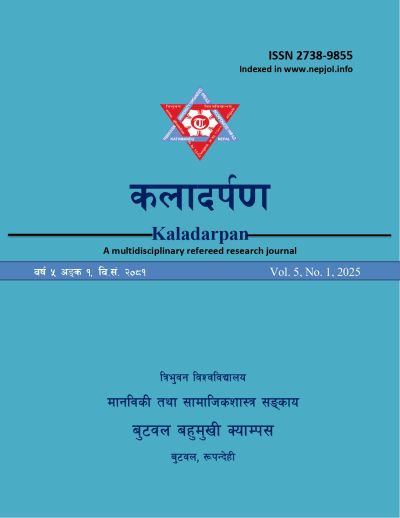Resisting Patriarchy: Analyzing Gender Dynamics in Chandrakala Newar's “Agnisnan” and “Hunger”
DOI:
https://doi.org/10.3126/kaladarpan.v5i1.74739Keywords:
Patriarchy, Resist, gender dynamics, social reality, juxtapose, struggleAbstract
Nepalese short fictions paint the social reality with a seamless gaze, juxtaposing women's struggle through an apparently meaningless existence. In capitalist society, the nuclear family is the best combination of the parts of the mode of reproduction from the standpoint of capital, and its oppressive qualities have been exhaustively analyzed in feminist literature. This paper explores the capitalist structures, processes, and contradictions that, at the mode of production level, create observed forms of gender inequality that are always historical in the Marxist sense. As a result, social reality should focus not only on the characteristics that it shares with past periods but also on those that are unique to the mode of production in question. Nepali short fictions disclose the domestic violence that Nepalese women are bound to face. In the selected two stories, characters like Junu and Shanti are doomed to face domestic violence because of their economic dependency on their male partners. So, without being economically independent, women in Nepalese society cannot celebrate their total freedom. The qualitative data analysis technique is adopted using feminism and gender studies as a theoretical methodology of this research.




